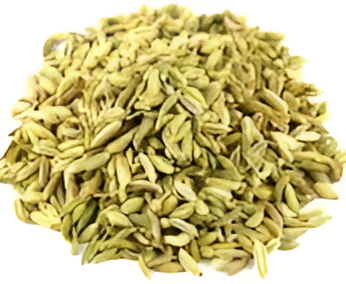Aniseed: A Comprehensive Overview

Aniseed, derived from the seeds of the Pimpinella anisum plant, is a spice celebrated for its unique flavor and numerous health benefits. This aromatic seed has been used for centuries in culinary applications, traditional medicine, and even as a natural remedy. In this comprehensive overview, we will explore the origins, uses, benefits, and potential side effects of aniseed.
Origins and History
Aniseed has a rich history that dates back to ancient civilizations. Native to the Eastern Mediterranean region and parts of Asia, the cultivation of aniseed can be traced back over 4,000 years. The Egyptians used aniseed in their cooking, while the Greeks and Romans valued it for both its culinary and medicinal properties. The spice made its way to various parts of the world through trade routes, and today it is cultivated in many countries, including Spain, Turkey, India, and China.
Culinary Uses
Aniseed is prized for its sweet, aromatic flavor, reminiscent of licorice. It is used in a variety of culinary applications, enhancing both savory and sweet dishes. Here are some popular uses of aniseed in cooking:
- Baking: Aniseed is often added to breads, cakes, and cookies, providing a distinct flavor. Traditional recipes, such as Italian biscotti and German springerle, frequently include aniseed.
- Beverages: Aniseed is a key ingredient in many liqueurs, such as ouzo, sambuca, and absinthe. Herbal teas and infusions also contain it.
- Savory Dishes: Aniseed pairs well with meats, particularly in spice blends for sausages or marinades. It is commonly found in Middle Eastern cuisine, where it is used in dishes like kebabs and stews.
- Pickling: The spice is sometimes used in pickling recipes, adding a sweet note to pickled vegetables.
- Condiments: Aniseed can be found in certain mustards and sauces, enhancing their flavor profile.
Health Benefits
Aniseed is not just a flavorful addition to food; it also boasts numerous health benefits. The following are a few of the most noteworthy:
- Digestive Aid: Aniseed is known for its carminative properties, helping to relieve gas, bloating, and other digestive discomforts. It can be consumed as a tea or added to meals for digestive support.
- Antioxidant Properties: Rich in antioxidants, aniseed helps combat oxidative stress in the body.In addition to improving general health, this may lower the chance of developing chronic illnesses.
- Anti-inflammatory Effects: Aniseed contains compounds that exhibit anti-inflammatory properties, which can help reduce inflammation in the body and support joint health.
- Hormonal Balance: Aniseed has phytoestrogen properties, which may help regulate hormonal balance, particularly in women. It has been traditionally used to alleviate menstrual discomfort and support lactation in nursing mothers.
- Respiratory Health: The expectorant properties of aniseed can help relieve coughs and respiratory congestion. It is often included in cough syrups and remedies.
- Antimicrobial Activity: Aniseed has demonstrated antimicrobial properties, making it beneficial for fighting infections and supporting overall immune health.
Nutritional Profile
Aniseed is not only flavorful but also nutritious. A tablespoon of aniseed contains approximately:
- Calories: 22
- Carbohydrates: 3.5 g
- Protein: 0.6 g
- Fat: 1 g
- Fiber: 2 g
- Vitamins: Rich in B vitamins, including niacin and riboflavin
- Minerals: Contains calcium, iron, magnesium, and potassium
This nutritional profile makes aniseed a healthy addition to various diets, providing essential nutrients while enhancing flavor.
How to Use Aniseed
Incorporating aniseed into your diet is easy and can be done in various ways. Here are some tips for using aniseed effectively:
- Whole Seeds: You can use whole aniseed in baking or cooking by adding it to dishes that require simmering, allowing the flavor to infuse.
- Ground Aniseed: Ground aniseed can be easily incorporated into baked goods, spice blends, or beverages. Be cautious with the amount, as its flavor is potent.
- Anise Oil: Anise oil is a concentrated form of aniseed that can be used in recipes, but it should be used sparingly due to its strong flavor.
- Infusions and Teas: Brewing aniseed as a tea is a delightful way to enjoy its flavor and health benefits. Simply steep whole or crushed seeds in hot water.
Potential Side Effects and Precautions
While aniseed is generally safe for most people when consumed in culinary amounts, some individuals may experience side effects. Here are a few considerations:
- Allergic Reactions: Some people may be allergic to aniseed. Skin rashes, itching, or stomach distress are possible symptoms.
- Hormonal Effects: Due to its phytoestrogen content, excessive consumption of aniseed may affect hormone levels, particularly in individuals with hormone-sensitive conditions.
- Interactions with Medications: Aniseed may interact with certain medications, including anticoagulants and medications for hormone-sensitive conditions. It is advisable to consult a healthcare professional if you are taking medications.
- Pregnancy and Breastfeeding: Pregnant and breastfeeding women should use aniseed in moderation and consult a healthcare provider before using it as a supplement.
Conclusion
Aniseed is a versatile spice with a long history of culinary and medicinal use. Its unique flavor, health benefits, and nutritional profile make it a valuable addition to any diet. Whether used in baking, cooking, or as a natural remedy, aniseed continues to be a beloved ingredient around the world. As with any spice or herb, moderation is key, and it’s important to consider any individual health conditions before making significant changes to your diet. Embrace the aromatic qualities of aniseed and explore its many uses for a flavorful and healthfu